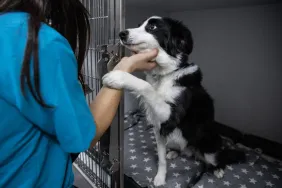Does it feel as though every time you catch your canine friend red-handed breaking a household rule, they often have what you think looks like a guilty face? Or can you recall the many times you thought you’d seen your dog giving you a confused look?
Turns out, you weren’t imagining things. A new study conducted by a team of researchers from George Washington University discovered humans can accurately read and understand their dog’s facial expressions, particularly if the canine ranges between two and seven years of age.
CBS News reports the scientists came to the conclusion after analyzing several interactions between humans and their dogs.
According to the study, how a dog’s face looks — that is, whether they have a plain, single-colored face, or a multi-colored one — determines how well their owners will understand these facial expressions.
Decoding a dog’s facial expressions
Interestingly, the researchers discovered dogs with plain, single-colored faces — like Golden Retrievers, for instance — often convey facial expressions in a much more obvious manner during interactions with humans.
Therefore, owners with plain-faced dogs have a higher chance of accurately discerning their dogs’ emotions and what they’re trying to communicate through facial expressions.
On the other hand, the study found owners whose dogs have multi-colored faces — for example, Saint Bernards — usually have a harder time decoding their pup’s facial expressions. As such, these owners may not be able to correctly discern what their canines are thinking or feeling.
Moreover, scientists concluded senior dogs often exhibit fewer facial expressions than younger ones. According to their findings, this is because senior dogs have lived with their owners for an extended period, so there is a better understanding between them and their humans.
In other words, older dogs don’t feel the need to be more facially expressive to make a point to their pet parents.
Carol Erickson, an advocate with the Pennsylvania Society for the Prevention of Cruelty to Animals (SPCA), acknowledged the role of this study in helping strengthen the connection between people and their dogs.
“This study is important because it shows that people are in the house with animals, you’re seeing animals on the street, and if you can learn to read their faces as they’ve learned to read ours, it really helps that human-animal bond,” Erickson shared.









